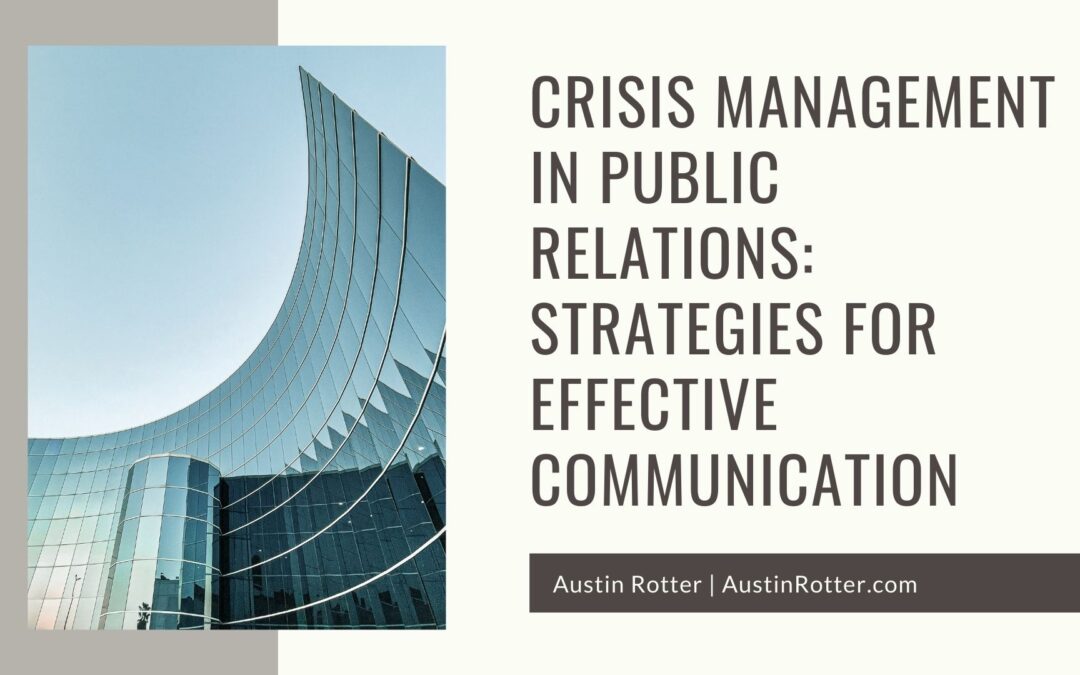In today’s fast-paced and interconnected world, crisis management in public relations has become more crucial than ever. A crisis can strike any organization at any time, and how it is managed can make or break its reputation. Effective communication lies at the heart of successful crisis management, as it allows organizations to navigate the stormy waters of public perception and emerge stronger on the other side.
Understanding Crisis Management in Public Relations
Before delving into strategies for effective communication during a crisis, it’s important to understand what crisis management in public relations entails. A crisis in PR refers to any situation or event that poses a significant threat to an organization’s reputation, operations, or financial stability. These crises can range from product recalls and data breaches to natural disasters and employee misconduct.
Effective crisis management involves not only mitigating the immediate impact of the crisis but also protecting the long-term reputation of the organization. This is where communication comes into play.
Strategies for Effective Communication During a Crisis
1. Preparation is Key
The first step in effective crisis communication is preparation. Organizations should have a well-documented crisis communication plan in place long before a crisis occurs. This plan should outline roles and responsibilities, establish communication channels, and identify key spokespeople. Regularly updating and rehearsing this plan is crucial to ensure a quick and coordinated response when a crisis hits.
2. Timely Response
In the age of social media, news spreads rapidly, and public opinion can form within minutes. Therefore, it’s essential to respond to a crisis promptly. Silence can be interpreted as guilt or incompetence. Acknowledge the issue as soon as possible and inform the public that the organization is addressing it. Even if all the details aren’t available, a reassuring initial response can buy time to gather more information.
3. Transparency and Honesty
During a crisis, transparency and honesty are non-negotiable. Misleading or withholding information can severely damage an organization’s credibility. Be forthright about what is known and unknown, and commit to providing updates as more information becomes available. If mistakes were made, admit them and outline steps being taken to rectify the situation.
4. Designated Spokespeople
Having designated spokespeople who are trained in crisis communication is essential. These individuals should be media-savvy, empathetic, and capable of conveying the organization’s messages effectively. It’s crucial that they stick to the facts, avoid speculation, and remain calm under pressure.
5. Multichannel Communication
In a crisis, communication should be multi-pronged. Utilize various channels to reach different stakeholder groups, including traditional media, social media, press releases, and the organization’s website. Keep messaging consistent across all platforms to avoid confusion.
6. Empathetic Tone
Show empathy and concern for those affected by the crisis. This humanizes the organization and demonstrates its commitment to addressing the issue. Avoid corporate jargon and communicate in a way that resonates with the emotions of the audience.
7. Social Media Monitoring and Management
Social media can be a double-edged sword during a crisis. On the one hand, it can amplify the crisis, but on the other, it provides an opportunity for the organization to engage with the public directly. Monitor social media channels closely, respond to inquiries and concerns, and address misinformation promptly.
8. Stakeholder Engagement
Engage with key stakeholders, including employees, customers, investors, and the community. Keep them informed about the situation and how it is being resolved. Their support can be invaluable in weathering the storm.
9. Learn from the Crisis
Once the crisis has been resolved, don’t let the lessons learned go to waste. Conduct a thorough post-crisis review to assess what went well and what could have been handled better. Use this knowledge to update the crisis communication plan and strengthen the organization’s preparedness for future crises.
10. Rebuilding Trust
Rebuilding trust takes time and effort. After the crisis has passed, continue to communicate openly about the organization’s actions and improvements. Show that you are committed to preventing similar crises in the future. Consistent, positive actions over time can help restore the organization’s reputation.
Crisis management in public relations is a critical aspect of modern business. Effective communication strategies are at the core of successfully navigating a crisis. In today’s fast-paced and interconnected world, the ability to communicate effectively during a crisis is a skill that no organization can afford to overlook.
